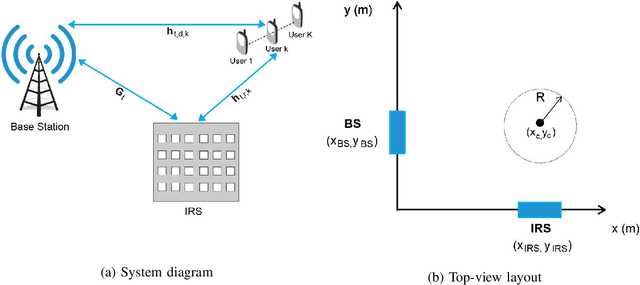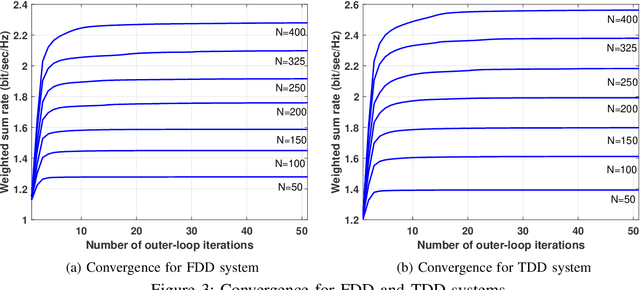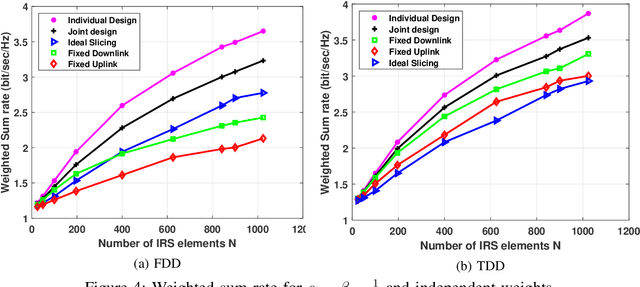Mahmoud Saad Abouamer
Geometry-informed Channel Statistics Prediction Based upon Uncalibrated Digital Twins
Nov 20, 2024Abstract:Digital twins (DTs) of wireless environments can be utilized to predict the propagation channel and reduce the overhead of required to estimate the channel statistics. However, direct channel prediction requires data-intensive calibration of the DT to capture the environment properties relevant for propagation of electromagnetic signals. We introduce a framework that starts from a satellite image of the environment to produce an uncalibrated DT, which has no or imprecise information about the materials and their electromagnetic properties. The key idea is to use the uncalibrated DT to implicitly provide a geometric prior for the environment. This is utilized to inform a Gaussian process (GP), which permits the use of few channel measurements to attain an accurate prediction of the channel statistics. Additionally, the framework is able to quantify the uncertainty in channel statistics prediction and select rate in ultra-reliable low-latency communication (URLLC) that complies with statistical guarantees. The efficacy of the proposed geometry-informed GP is validated using experimental data obtained through a measurement campaign. Furthermore, the proposed prediction framework is shown to provide significant improvements compared to the benchmarks where i) direct channel statistics prediction is obtained using an uncalibrated DT and (ii) the GP predicts channel statistics using information about the location.
Joint Uplink-Downlink Resource Allocation for Multi-User IRS-Assisted Systems
Aug 25, 2021



Abstract:We investigate the joint uplink-downlink design for time-division-duplexing (TDD) and frequency-division-duplexing (FDD) multi-user systems aided by an intelligent reflecting surface (IRS). We formulate and solve a multi-objective optimization problem to maximize uplink and downlink rates as a weighted-sum problem (WSP) that captures the trade-off between achievable uplink and downlink rates. We propose a resource allocation design that optimizes the WSP by jointly optimizing the beamforming vectors, power control and IRS phase shifts where the same IRS configuration is used for assisting uplink and downlink transmissions. In TDD, the proposed IRS design reduces the overhead associated with IRS configuration and the need for quiet periods while updating the IRS. In addition, a joint IRS design is critical for supporting concurrent uplink and downlink transmissions in FDD. We investigate the effect of different user-weighting strategies and different parameters on the performance of the joint IRS design and the resultant uplink-downlink trade-off regions. In all FDD scenarios and some TDD scenarios, the joint design significantly outperforms the heuristic of using the IRS configuration optimized for uplink (respectively, downlink) to assist the downlink (respectively, uplink) transmissions and substantially bridges the gap to the upper bound of allowing different IRS configurations in uplink and downlink.
 Add to Chrome
Add to Chrome Add to Firefox
Add to Firefox Add to Edge
Add to Edge